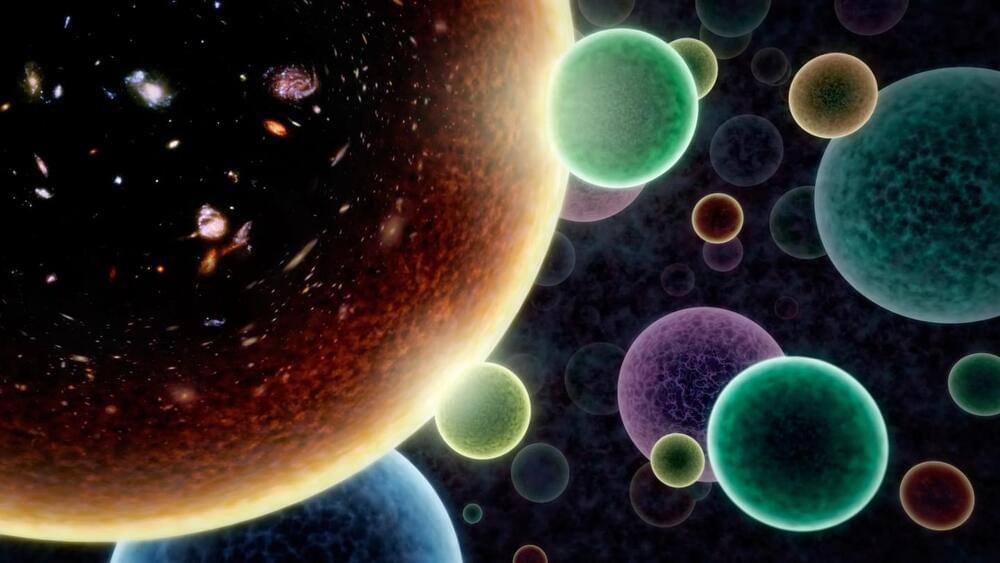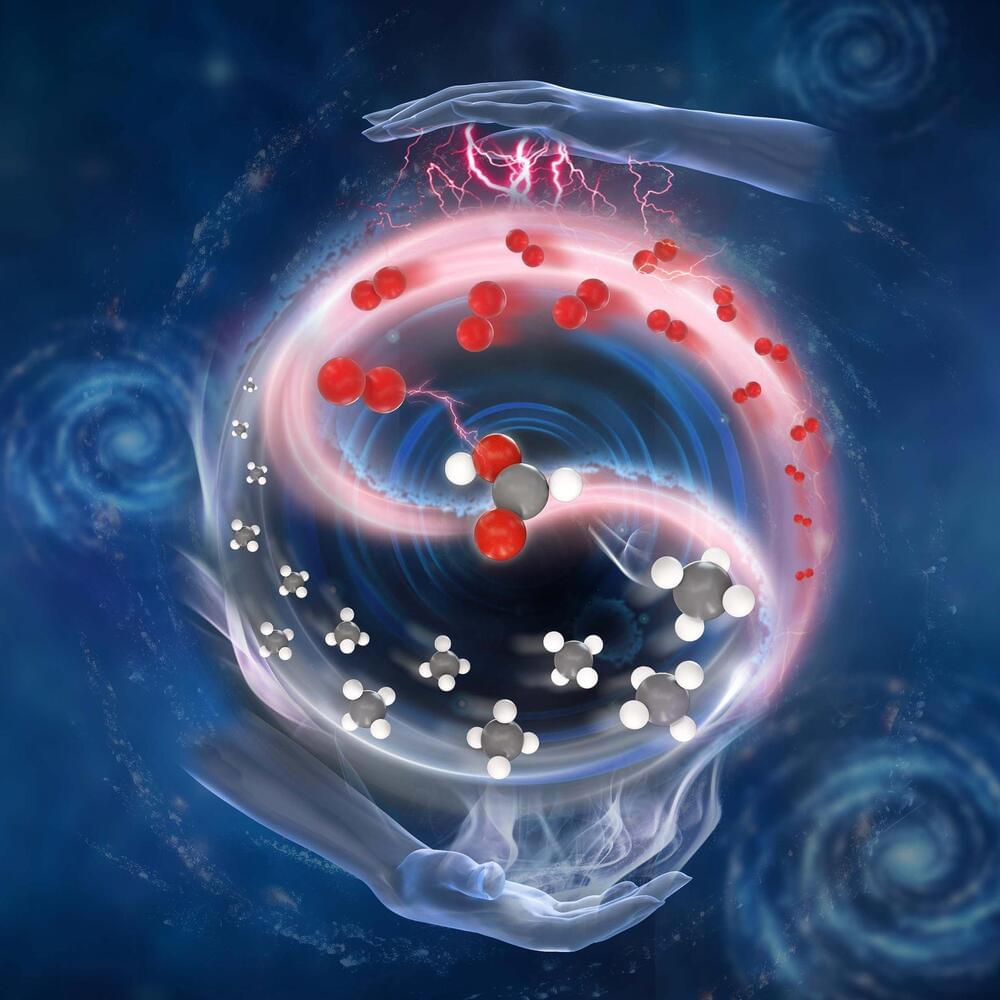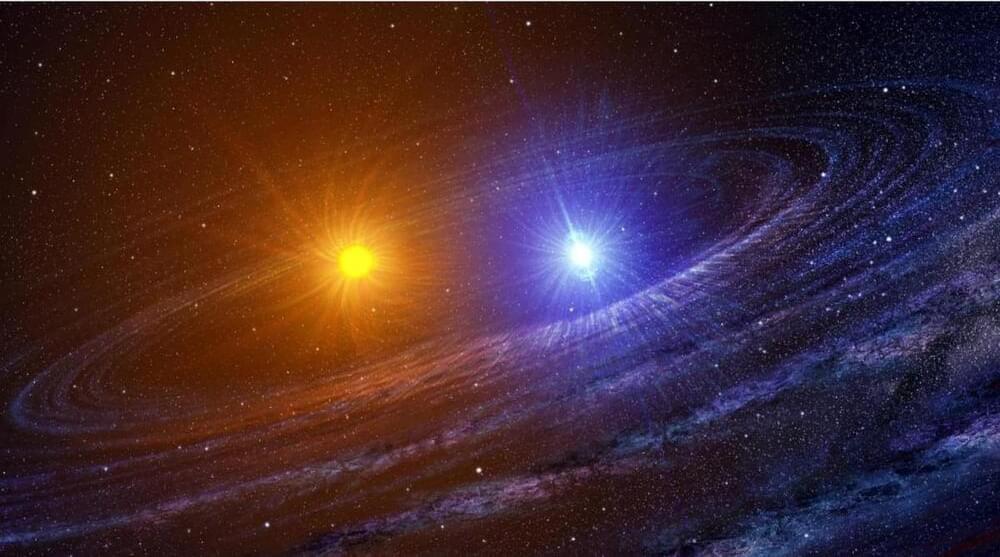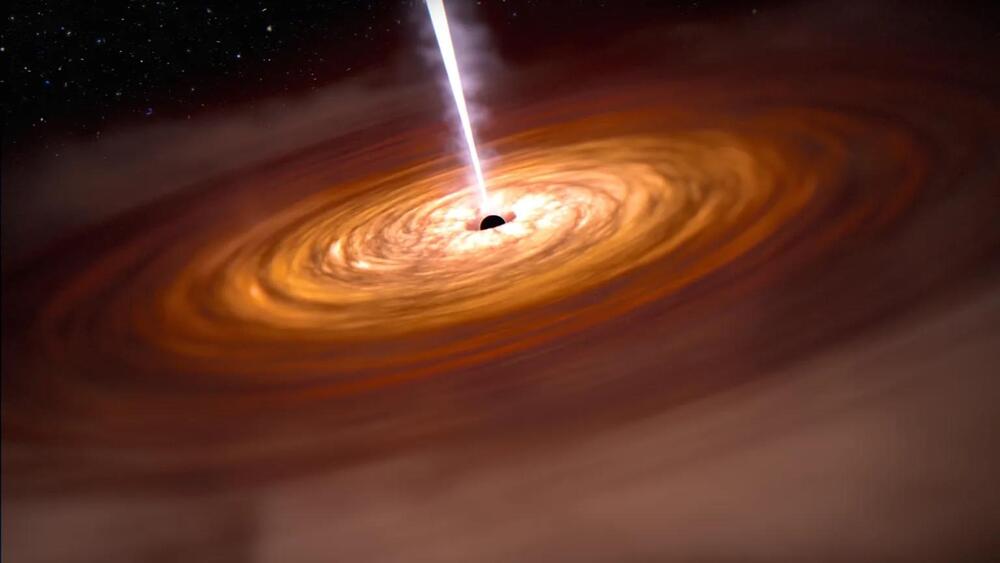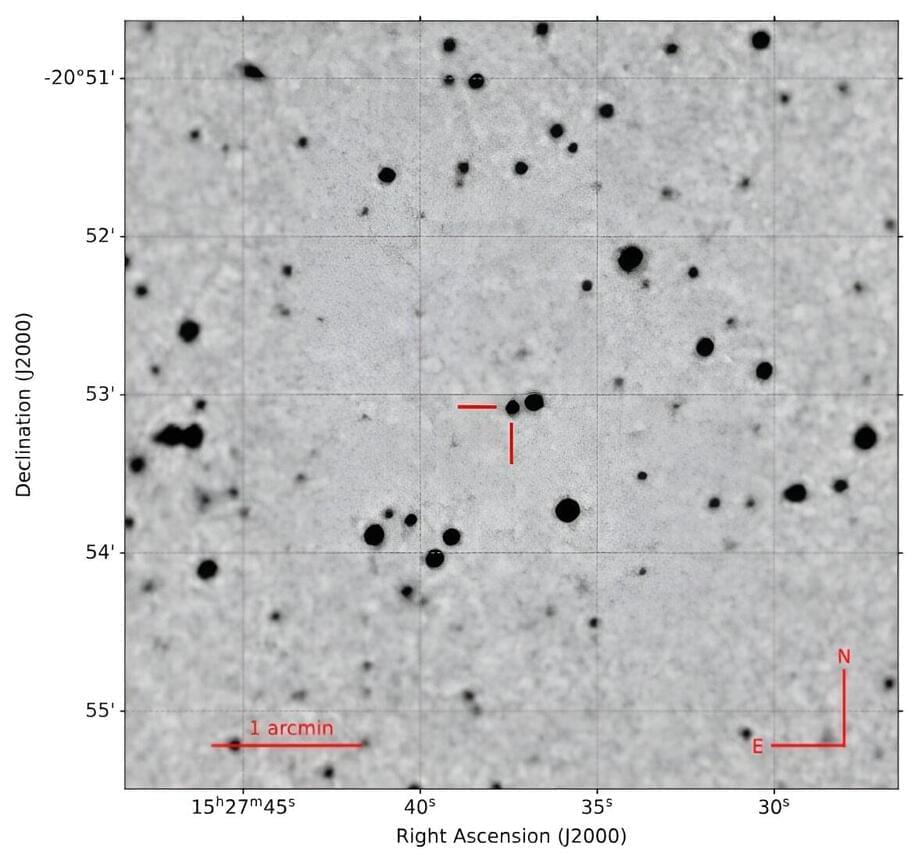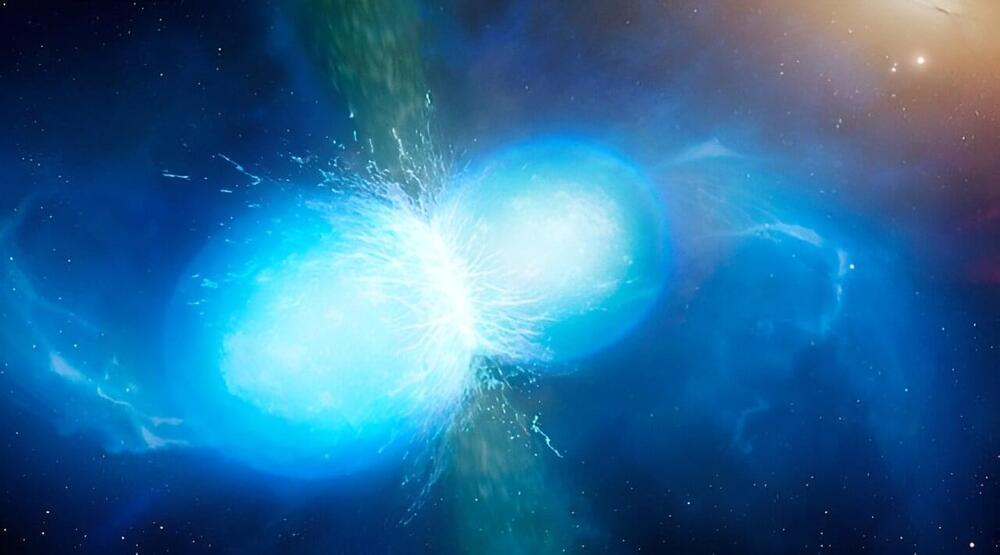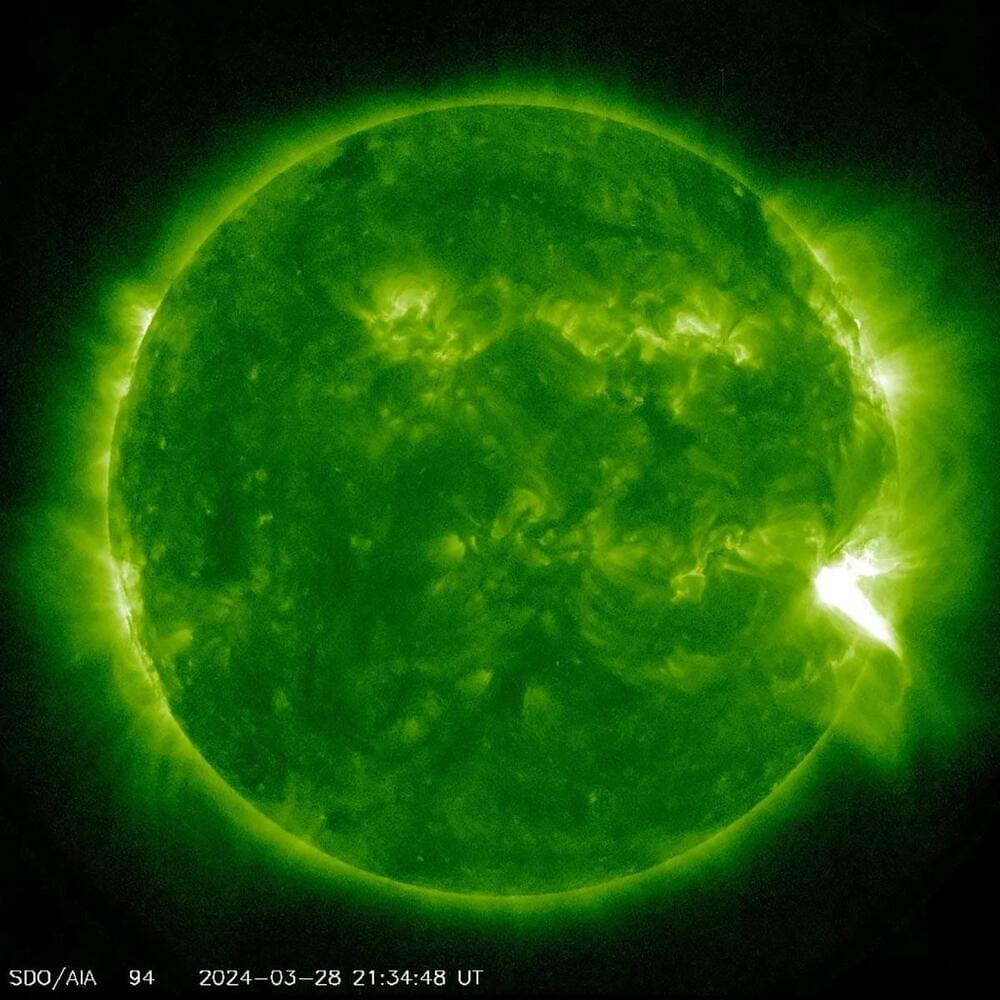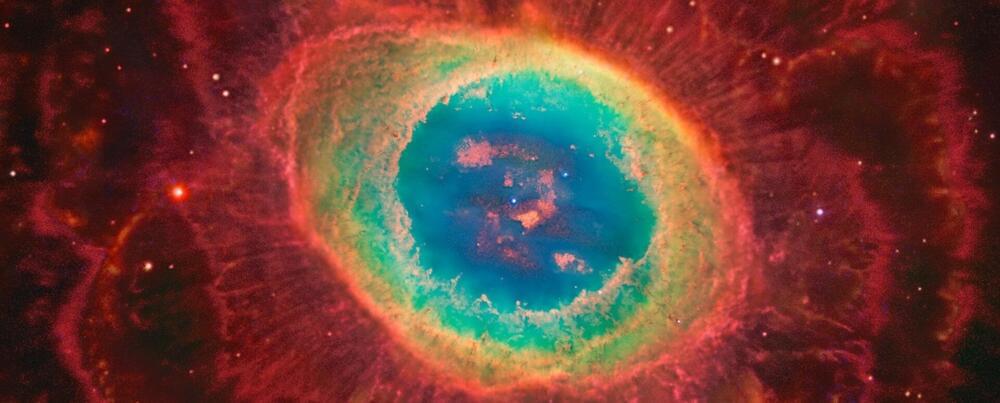Archive for the ‘physics’ category: Page 49
Apr 1, 2024
Our universe expands by merging with ‘baby universes’, study suggests
Posted by Shubham Ghosh Roy in categories: cosmology, physics
Our universe is getting bigger and bigger really fast — something all the theories about space agree on, but none of them can totally explain. Now, there’s a new idea in town: Maybe our universe is expanding because it keeps bumping into and soaking up “baby” universes.
When scientists look at the afterglow of the Big Bang, known as the cosmic microwave background, they see that our universe is swelling up quicker and quicker. To make sense of this, physicists use something called the Standard Cosmological Model, which says there’s this weird stuff called dark energy pushing the universe to expand.
Apr 1, 2024
Electro-Fenton Magic Makes Methane the New Eco Fuel Hero
Posted by Saúl Morales Rodriguéz in categories: chemistry, energy, physics
A team from the Dalian Institute of Chemical Physics made a breakthrough in converting methane to formic acid using oxygen at room temperature through a high-pressure electro-Fenton process, achieving significantly higher efficiency and productivity than traditional methods.
Direct conversion of methane (CH4) and oxygen (O2) to value-added chemicals is important for natural gas industries. However, challenges remain due to the difficulty of O2 activation in forming active oxygen species for CH4 activation under mild conditions.
Recently, a research group led by Prof. Dehui Deng, Assoc. Prof. Xiaoju Cui and Liang Yu from the Dalian Institute of Chemical Physics (DICP) of the Chinese Academy of Sciences (CAS) realized the electrochemical conversion of CH4 by O2 to formic acid (HCOOH) at room temperature. This study was published in the Journal of the American Chemical Society.
Mar 31, 2024
How Is Flocking Like Computing?
Posted by Dan Breeden in categories: biological, computing, food, physics
Birds flock. Locusts swarm. Fish school. Within assemblies of organisms that seem as though they could get chaotic, order somehow emerges. The collective behaviors of animals differ in their details from one species to another, but they largely adhere to principles of collective motion that physicists have worked out over centuries. Now, using technologies that only recently became available, researchers have been able to study these patterns of behavior more closely than ever before.
In this episode, the evolutionary ecologist Iain Couzin talks with co-host Steven Strogatz about how and why animals exhibit collective behaviors, flocking as a form of biological computation, and some of the hidden fitness advantages of living as part of a self-organized group rather than as an individual. They also discuss how an improved understanding of swarming pests such as locusts could help to protect global food security.
Listen on Apple Podcasts, Spotify, Google Podcasts, TuneIn or your favorite podcasting app, or you can stream it from Quanta.
Mar 31, 2024
How are extreme “blue supergiant” stars born? Astronomers may finally know
Posted by Shubham Ghosh Roy in categories: cosmology, physics
The team of scientists set about investigating this by analyzing 59 early B-type blue supergiants located in the Large Magellanic Cloud, a satellite galaxy of the Milky Way, and creating novel stellar simulations.
“We simulated the mergers of evolved giant stars with their smaller stellar companions over a wide range of parameters, taking into account the interaction and mixing of the two stars during the merger,” study leader and IAC researcher Athira Menon said in a statement. “The newly born stars live as blue supergiants throughout the second-longest phase of a star’s life, when it burns helium in its core.”
The team’s findings suggest that blue supergiants slip into an evolutionary gap in conventional stellar physics — a phase of stellar evolution where astronomers would not expect to see stars. The question is, Can this explain the remarkable properties of blue supergiant stars? It seems the answer is yes.
Mar 30, 2024
Astronomers map 1.3 million supermassive black holes
Posted by Dan Breeden in categories: computing, cosmology, mapping, physics
Ever wonder where all the active supermassive black holes are in the universe? Now, with the largest quasar catalog yet, you can see the locations of 1.3 million quasars in 3D.
The catalog, Quaia, can be accessed here.
“This quasar catalog is a great example of how productive astronomical projects are,” says David Hogg, study co-author and computational astrophysicist at the Flatiron Institute, in a press release. “Gaia was designed to measure stars in our galaxy, but it also found millions of quasars at the same time, which give us a map of the entire universe.” By mapping and seeing where quasars are across the universe, astrophysicists can learn more about how the universe evolved, insights into how supermassive black holes grow, and even how dark matter clumps together around galaxies. Researchers published the study this week in The Astrophysical Journal.
Mar 29, 2024
New cataclysmic variable discovered by astronomers
Posted by Dan Breeden in categories: physics, satellites
By analyzing the data from ESA’s XMM-Newton and Gaia satellites, astronomers from the Leibniz Institute for Astrophysics Potsdam (AIP) in Germany and elsewhere have detected a new magnetic cataclysmic variable system, most likely of the polar type. The finding was reported in a research paper published March 21 on the pre-print server arXiv.
Mar 29, 2024
Gravitational waves may have made human life possible
Posted by Dan Breeden in categories: biological, physics
Could it be that human existence depends on gravitational waves? Some key elements in our biological makeup may come from astrophysical events that occur because gravitational waves exist, a research team headed by John R. Ellis of Kings College London suggests.
Mar 29, 2024
Solar Power Surge: Sun Emits Intense X1.1 Flare
Posted by Dan Breeden in categories: alien life, government, physics, solar power, sustainability
The Sun emitted a strong solar flare, peaking at 4:56 p.m. ET on March 28, 2024. NASA
Established in 1958, the National Aeronautics and Space Administration (NASA) is an independent agency of the United States Federal Government that succeeded the National Advisory Committee for Aeronautics (NACA). It is responsible for the civilian space program, as well as aeronautics and aerospace research. Its vision is “To discover and expand knowledge for the benefit of humanity.” Its core values are “safety, integrity, teamwork, excellence, and inclusion.” NASA conducts research, develops technology and launches missions to explore and study Earth, the solar system, and the universe beyond. It also works to advance the state of knowledge in a wide range of scientific fields, including Earth and space science, planetary science, astrophysics, and heliophysics, and it collaborates with private companies and international partners to achieve its goals.
Mar 27, 2024
The mystery of fullerenes in space explained
Posted by Dan Breeden in categories: nanotechnology, physics, space
A study from the Instituto de Astrofísica de Canarias (IAC) which combines laboratory chemistry with astrophysics, has shown for the first time that grains of dust formed by carbon and hydrogen in a highly disordered state, known as HAC, can take part in the formation of fullerenes, carbon molecules which are of key importance for the development of life in the universe, and with potential applications in nanotechnology. The results are published in the journal Astronomy & Astrophysics.

